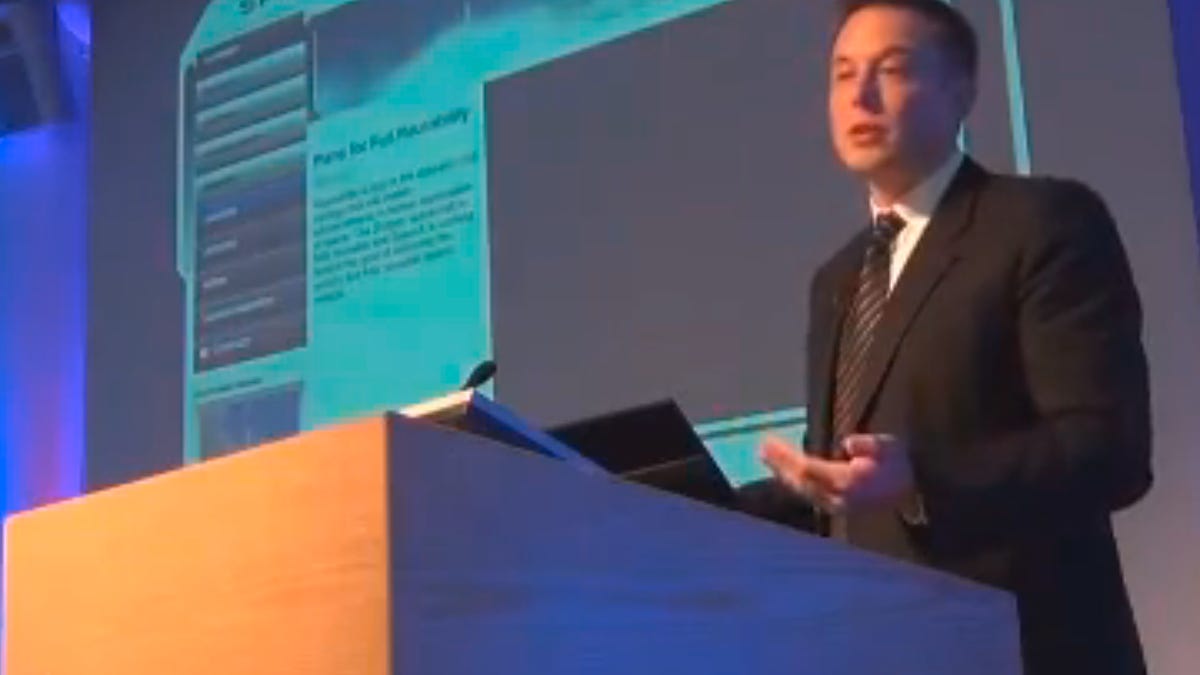Elon Musk's plan for life on Mars
SpaceX is aiming for a manned mission to Mars in 10 to 20 years, with citylike colonies to follow. It's not exactly what NASA envisioned back in the 1970s.

Elon Musk, founder of the private space transport company SpaceX, earlier this month outlined plans for the colonization of Mars, something he says can get under way in the next 10 to 20 years with the first manned mission to the Red Planet. If the first settlement is designed to build and sustain additional settlements, colonization could proceed from there quite rapidly, he explained at the Royal Aeronautical Society in London, as reported by Space.com.
Following a first manned mission, Musk next envisions sending a small team of 10 people to Mars, along with construction supplies to build transparent domes.
Still, the process of building citylike colonies to sustain long-term habitation is expensive and challenging. Unveiling some of his planning specifics, Musk stressed the importance of a reusable rocket to keep costs down.
With initial systems in place, the first people to arrive would then begin to pressurize the domes with Mars' atmospheric carbon dioxide, infusing the soil with nutrients, which would then allow the early Martian migrants to grow Earth crops. Life would likely be hard early on, with high set-up costs to build the life-sustaining machines, he said. But over time the colony would become more established and self-sufficient, and more and more people would arrive -- up to 80,000, perhaps.
Initial equipment would include machines to harvest methane, oxygen, and carbon dioxide from Mars' atmospheric nitrogen, and devices for extracting water from the subsurface ice, Musk explained in London. Once food, water, and shelter are established and life is under way, you too can move to Mars.
But getting there will cost you. Tickets would run up to $500,000, Musk supposes.
All this planning for life in space isn't new. Back in the 1970s, when only a handful of people had ever ventured into space over less than two decades, NASA was envisioning where technology might take us.
NASA Ames Research Center and Stanford University held a space settlement design study, known as the 1975 NASA Summer Study, that envisioned what life in space might look like, including how we might live, grow, eat, and play there.
This project envisioned orbital space colonies -- see our slideshow -- that seem like quite idyllic places, with populations from 10,000 to more than a million inhabitants. With some described as "about the size of a California beach town" and endowed with weightless recreation, fantastic views, freedom, plenty of space, and great wealth, the study hypothesized potentially hundreds of thousands of individual colonies, calling the idea of space migration an "evolutionary event in magnitude similar to, if not greater than, ocean-based Life's colonization of land half a billion years ago."
The private sector may have taken over the migration mission to Mars, but it looks like there might be life on Mars sooner than you think.

